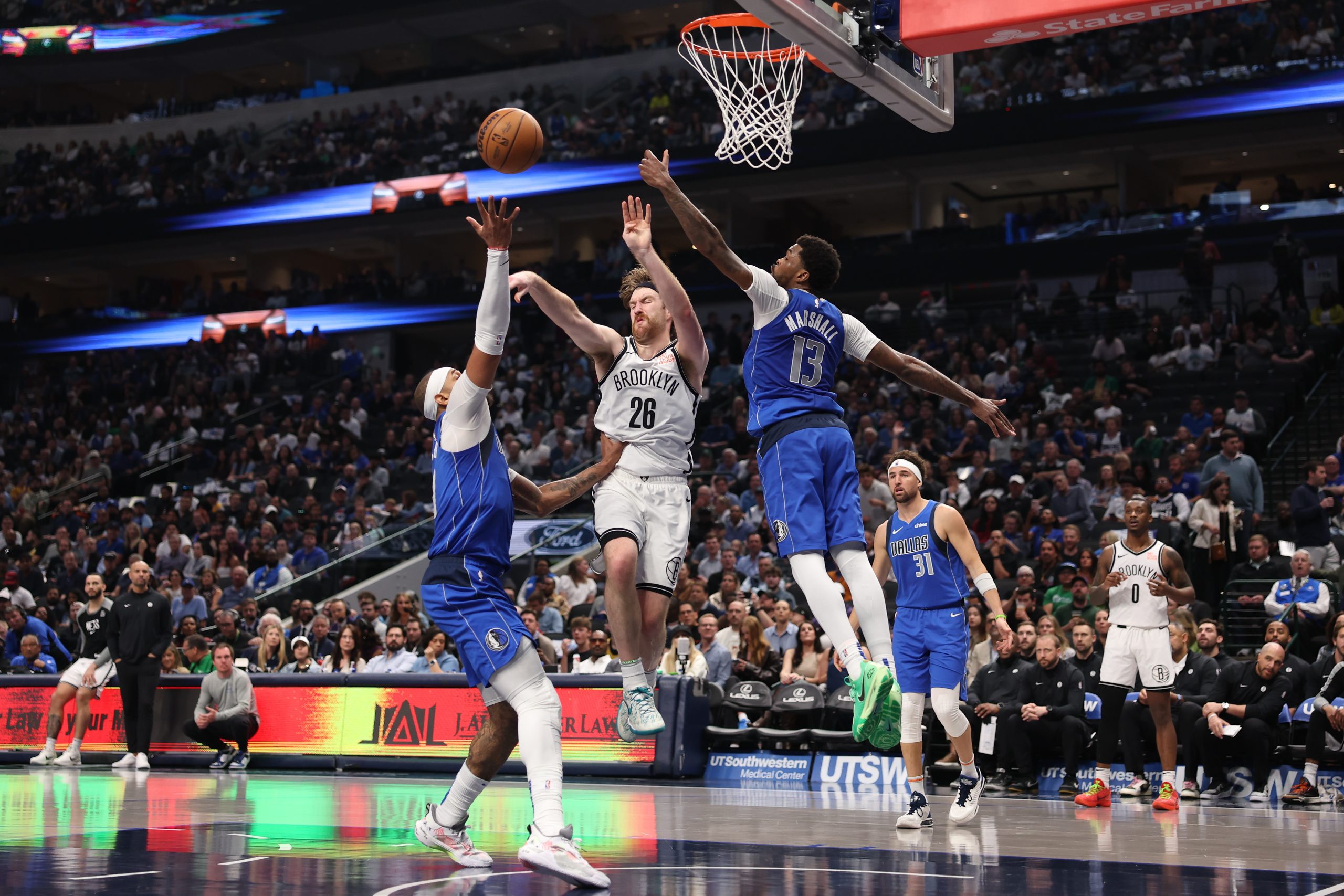It’s been a theme. Jayson Tatum, struggling to score, shoots a mildly contested three rather than driving the rock and looking to make something happen as the defense commits. Of course, the entire Boston Celtics roster has been guilty of similar decision-making in recent weeks, except for Jaylen Brown.
Where the rest of the roster zigged, Brown was zagging. Pressuring the rim, hunting his spots, and leading the Celtics in scoring as a result. There’s no denying that Brown has been his team’s best player since returning from the All-Star break.
Yet, on a random Tuesday night in mid-March, Tatum decided to follow the lead of his All-Star teammate, and the three-level scoring quickly followed. It all started on the very first possession of the game, as the Celtics ran a ‘cross exit’ action to get Tatum into the post with no player occupying the strong side corner (known as pinch post).
Ok, he didn’t get the bucket. However, the intent was there, and suddenly, a tone had been set for Tatum’s night. Right there, at that moment, you had a feeling that Joe Mazzulla was altering his gameplan, especially given the Sacramento Kings’ porous defense.
Both Tatum and Brown are incredibly talented finishers, but they go about things in different ways. Around the rim, Brown will look to overpower his man, creating space with a dropped shoulder and sudden stop to generate a significant amount of force or he’ll just charge right through you, control his body, and get the finish. Tatum, on the other hand, utilizes Euro-Steps, spin-offs, bump finishes, and likes to attack the gaps.
Nevertheless, Tatum has found himself settling for perimeter-based shots of late, regardless of the results. As such, it was encouraging to see him revert to a more well-balanced shot profile, especially when it better suits his offensive skill set.
Let’s face it. Tatum isn’t now and probably never will be an elite off-the-dribble three-point shooter, nor does he need to be. Instead, when operating as a shooter on the perimeter, Tatum is better suited to work off the catch — he’s averaging 39.3% on catch-and-shoot threes this season. Interestingly, Tatum is shooting just 28.9% on pull-up threes, despite taking 4.9 per game. Obviously, slimming down that shot type would make sense.
Tatum has shot 332 pull-up threes this season, draining 96 of them = 28.9%
He has also shot 291 catch-and-shoot threes, draining 115 = 39.5%
Asking him to limit his OTD three’s in favor of driving to create or score could be a solution. We got a good example last night.
— Adam Taylor (@AdamTaylorNBA) March 22, 2023
Furthermore, there is also the notion of mindset. When you watch Brown play, he’s consistently looking to pressure the defense, be it via a drive, a cut, or a slip. Hunting his spots allows Brown to put himself in the best position to be effective, and that doesn’t always mean he’s doing it with the ball in his hands.
Recently, Tatum has become far too static. Lingering around the perimeter, popping off screens rather than rolling, and accepting a good, but not great, shooting opportunity that probably involved a couple of dribbles to find his rhythm. Yet, against the Kings, Tatum was looking for space without the ball and appeared to be proactive in hunting easy opportunities around the rim. Take the play below as an example.
First of all, let’s give Derrick White some credit here. His 45-cut (a diagonal cut from the perimeter) is what triggered this play. Post-All-Star Tatum would likely lift out of the corner on this possession, positioning himself on the wing for a quick-fire three should White re-locate the rock. In theory, the inside-out game is perfectly fine, assuming the guy receiving the rock is knocking down his perimeter looks.
Rather than stick to what hasn’t been working, Tatum chooses to cut baseline, giving White an easy touch-pass option on the weakside low-block. The reason this play worked is that White’s cut engaged the weakside low-man, who was originally tasked with guarding Tatum, which allowed the All-Star to ghost across the baseline without drawing much attention until it was too late.
I also want to discuss Tatum’s mid-range game, be it due to an escape dribble out of a post-up, an entry pass into the elbow, or simply by hunting his shot. Early in his career, Tatum became over-reliant on the long-two, and it drove Celtics fans crazy. However, in recent years, Tatum has slowly reduced his number of attempts from the mid-range, despite being a valuable commodity in that region. It’s often thought that analytics doesn’t favor anything besides layups and threes, but in truth, if you’re a reliable middie-maker, analytics will tell you to take them (just not all the time).
Furthermore, with his ever-improving passing ability and reading of the game (processing speed), there is no reason to think that Tatum couldn’t dictate the tempo of the game as a post-facilitator. As you saw in the first clip, the Celtics looked to put Tatum into a ‘pinch post’ action, which was synonymous with Phil Jackson’s triangle offense and has proven successful at creating scoring opportunities both in the modern and historic iterations of the game.
Against the Kings, we saw a version of Tatum that had been missing in action for multiple weeks, but we also saw glimpses of what he could become down the line. Encouraging both Brown and Tatum play to their strengths, and trust that their games are different enough for them to do so, is going to be the final step in their evolution as a tandem and potentially what takes Boston from contenders to sure-fire champions. Will it happen this season? Well, this writer sure hopes so! Thankfully, we’ve seen enough flashes to believe that the metamorphosis is happening, so it’s certainly worth seeing through.






